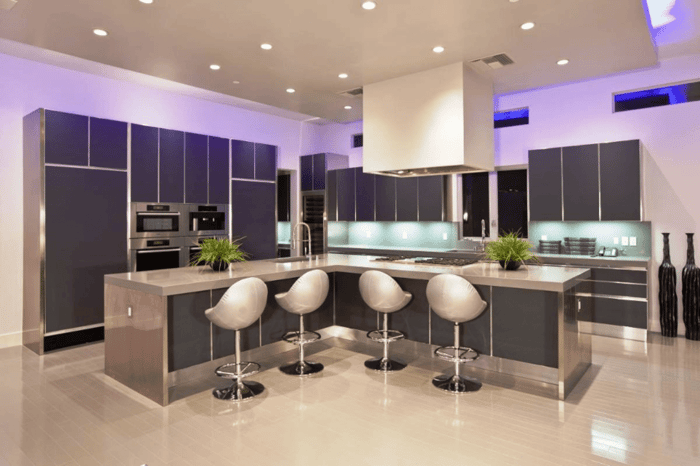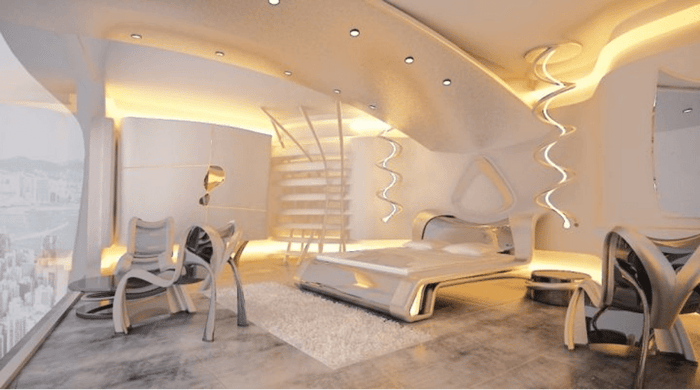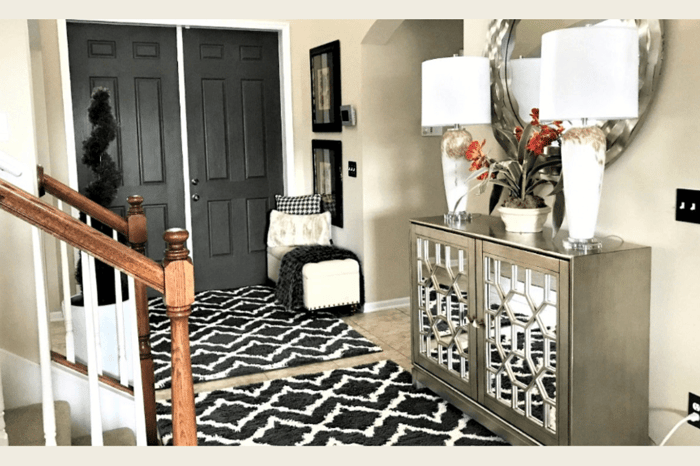How To Choose The Perfect Lighting For Your Home Decor Style
Home lighting is obviously essential but most people don’t realize how fun it can be as well as totally transform a space. Uplighting, spot lighting, recessed lighting, ambient lighting… all of these choices will affect the mood, the functionality and the ambiance of a room. Read on for a complete lighting guide for your home’s interior.
Function
The first step to consider when choosing lighting elements is to look at the practical application of light needed in the designated area. Ask yourself the following questions as you physically contemplate a room and how it will be used.
- What is the room going to be used for (work, studying, entertaining, relaxing)?
- What strength of light do you prefer (bright lights, more subdued)?
- Is natural light already present and can you take advantage of it?
 Dimensional
Dimensional
After a space’s utility has been determined now comes the fun part of how best to illuminate the area. Pro Tip: think of lighting in layers. Versus a single light source, you’ll want to use several different lighting sources to gain the maximum effect.
- Put your wall and overhead light on dimmers. That way you can control the intensity for different situations.
- Layering might look like: sconces on the walls; chandeliers or pendants hanging from the ceiling; floor and table lamps for accent and spot lighting.
- Floor and table lamps can be used for task lighting as well as more ambient lighting options. Because these pieces are not static, you have flexibility on where to place them and can easily change locations as you might shift furnishings around.
- Remember scale: large room, large furniture, use appropriate sized floor lamps to match its accompanying surroundings.
 Walls
Walls
Wall sconce lighting is one of the most stylish and functional options when lighting is needed for a room. Get creative and place sconces all along a bedroom or living room wall. It provides ample light and is a powerful statement in decorative fashion. Instead of relying on possibly too harsh overhead lighting, this source is more eye level, akin to having light from a window. When installing scones, be considerate of height placement (not too low) and work with existing architectural lines in the room, such as window heights, doors, and shelving units. Sconces will look gorgeous used in any of these scenarios:

- Accent lighting.
- Highlighting bookshelves.
- Framing a fireplace.
- Lining a hallway.
- Great for small rooms where floor or table lamps may not fit.
- Same reason to use them as a bedside light, takes no table or floor space.
- Dark rooms (basement) are ideal for sconce lighting.
- Homes with high ceilings.
 Ceilings
Ceilings
Chandeliers- original designs were inspired by lighting with candles before electricity was available. Typically classy and ornate, the style has been elevated to high art forms in the current century fitting into almost every decor style. Chandeliers are statement pieces and typically hung over a dining table, in the entryway, or in larger rooms of entertainment.

Flush mounts- are newer fixtures on the scene, offering an alternative to the old recessed or cans lighting that was used in the past decades. These lights are affixed to the ceiling and can be hidden, blending into the surroundings, or can be more subtle accents than other types of lighting elements. Flush mounts are best used on lower ceilings, 8’ or less in height.
 Pendants- a single bulb style light, usually hanging by a chain, string, or rod. Like the other types of lighting listed, pendants come in every manner of style and decor option. They can be hung alone making a grand statement or in pairs, highlighting a dining or cooking area. Pendants are used in styles from Mid-century modern, to Industrial, to Shabby Chic as a more contemporary version of a chandelier for room lighting. Pendant lights focus the attention whenever you hang them in a space. Remember to factor in ceiling height:
Pendants- a single bulb style light, usually hanging by a chain, string, or rod. Like the other types of lighting listed, pendants come in every manner of style and decor option. They can be hung alone making a grand statement or in pairs, highlighting a dining or cooking area. Pendants are used in styles from Mid-century modern, to Industrial, to Shabby Chic as a more contemporary version of a chandelier for room lighting. Pendant lights focus the attention whenever you hang them in a space. Remember to factor in ceiling height:
- Kitchen islands and counters- 72 to 76 inches from the floor.
- Dining tables- 36 inches above the surface.
 Wattage
Wattage
Choosing the right wattage bulb is working with light like an art element. You can control the atmosphere with your lighting, making a low ambient candle-like setting, a bright gallery type look, or anything in between. Atmospheric lighting is about creating a mood.
LED bulbs are recommended as an eco-friendly option. When shopping in this style, look for warm light or a Kelvin range of 2700-3000.
LIGHTING STYLES
Traditional
Victorian, romantic, European, is where the traditional style of lighting is inspired from. Classic traditional style lighting carries these characteristics:
- Flourished profiles
- Refined elegance
- Accentuated curves
- Ornate details
 Transitional
Transitional
Before Modern and after Traditional was the midway design style of the Transitional period lighting. These fixtures moved a step closer to minimalism, focusing more on comfort than ornamentation. Transitional lighting generates a warmer, minimalistic ambience that works with neutral tones, modern home furnishings, uncluttered living environments. This element works with any decorating style, setting off a room with warm, complementary lighting that never goes overboard.
- Clean lines
- Neutral colors
- Subtle designs
 Modern
Modern
Contemporary lighting can encompass a wide range of styles, definitely starting with Mid-Century Modern in the 50’s through every decade up into the current styles of 2021. Modern style tends to be synonymous with sleek, toned down, stylistic design, where artistry and straight forward functionality merge. Modern lighting styles moved away from the ornate sculptures of previous eras and emerged into a contemporary style that is clearly designed for optimal illumination and minimal fanfare.
 Industrial
Industrial
Industrial lighting uses a straightforward approach in its utilitarian design styles, putting function mainly before form. Materials are brushed metal, sleek pipe-fitting, iron, raw, and nonsense. Practical is the name of the game when going Industrial.
 Craftsman
Craftsman
A lighting style that was connected to the design scene in the early 20th century got its influence and inspiration from the Frank Lloyd Wright movement of connecting back to more natural origins of raw materials, shunning the new plastics, alloys and enhanced metals that had emerged after the industrial revolution. The style is a marriage of functional elements in a toned down design using glass shades, metal fluting, and chains, while embracing earth tones and geometric designs.
 Wrought Iron
Wrought Iron
Wrought iron lighting designs have their roots in the traditional craftsmanship of the old days, where blacksmiths were the artists of this hand-made style. Iron and steel were the available materials that bent with heat, and could be formed by the tools of the time, taking on shapes curled into interesting textures and natural designs. This style of fixture might often be found in a Gothic or Rustic home design style setting.
 Nautical
Nautical
Nautical lighting style comes from the seaside and shipping lifestyle. Dockside fixtures and sailing ship fixtures made of bronze, brushed steel, sea glass, rope, iron, and weathered wood. These compact lighting packages are a bit industrial in look but also harken to a rustic, vintage, and beach-themed set of decor as well.

#lighting #interiordesign #design #lightingdesign #light #led #homedecor #architecture #lights #interior #art #decor #lamp #home #interiors #furniture #ledlights #love #ledlighting #lightingdesigner #chandelier #lamps #decoration #homedesign #lightingideas #interiorlighting #lightinginspiration #interiordesigner #homedesign #chandelier #home #modernlighting #lightingsolutions #lightdesig








